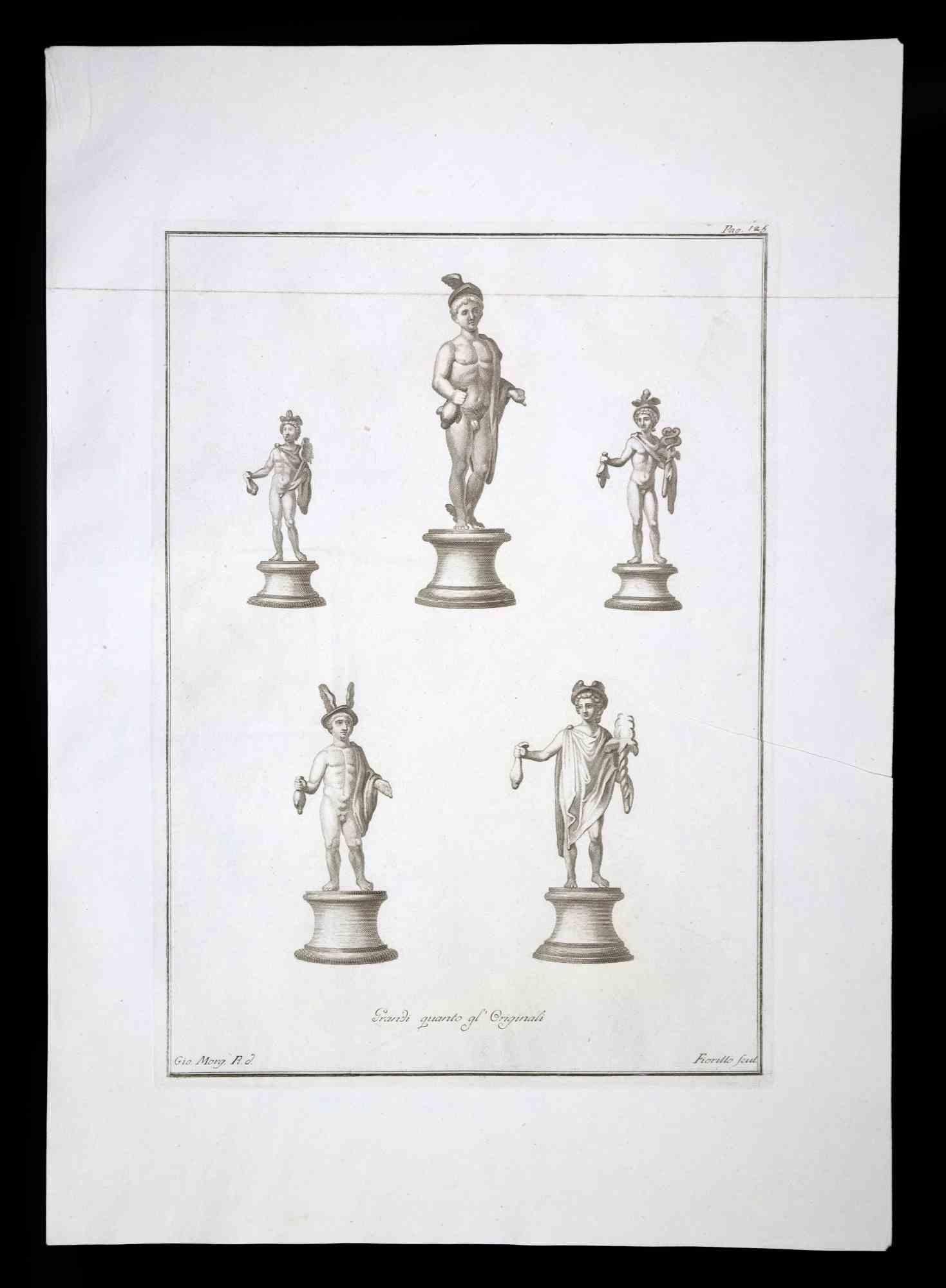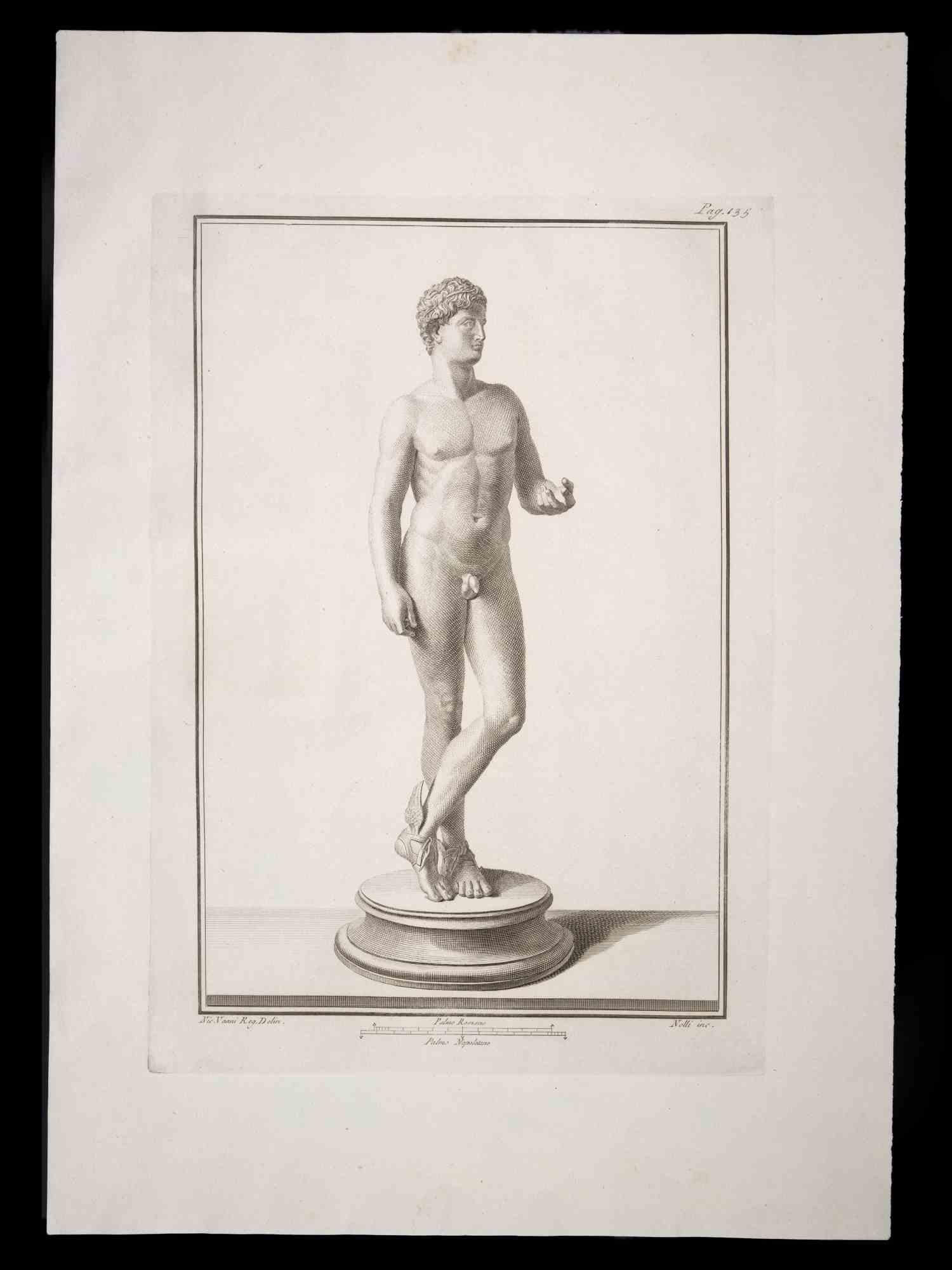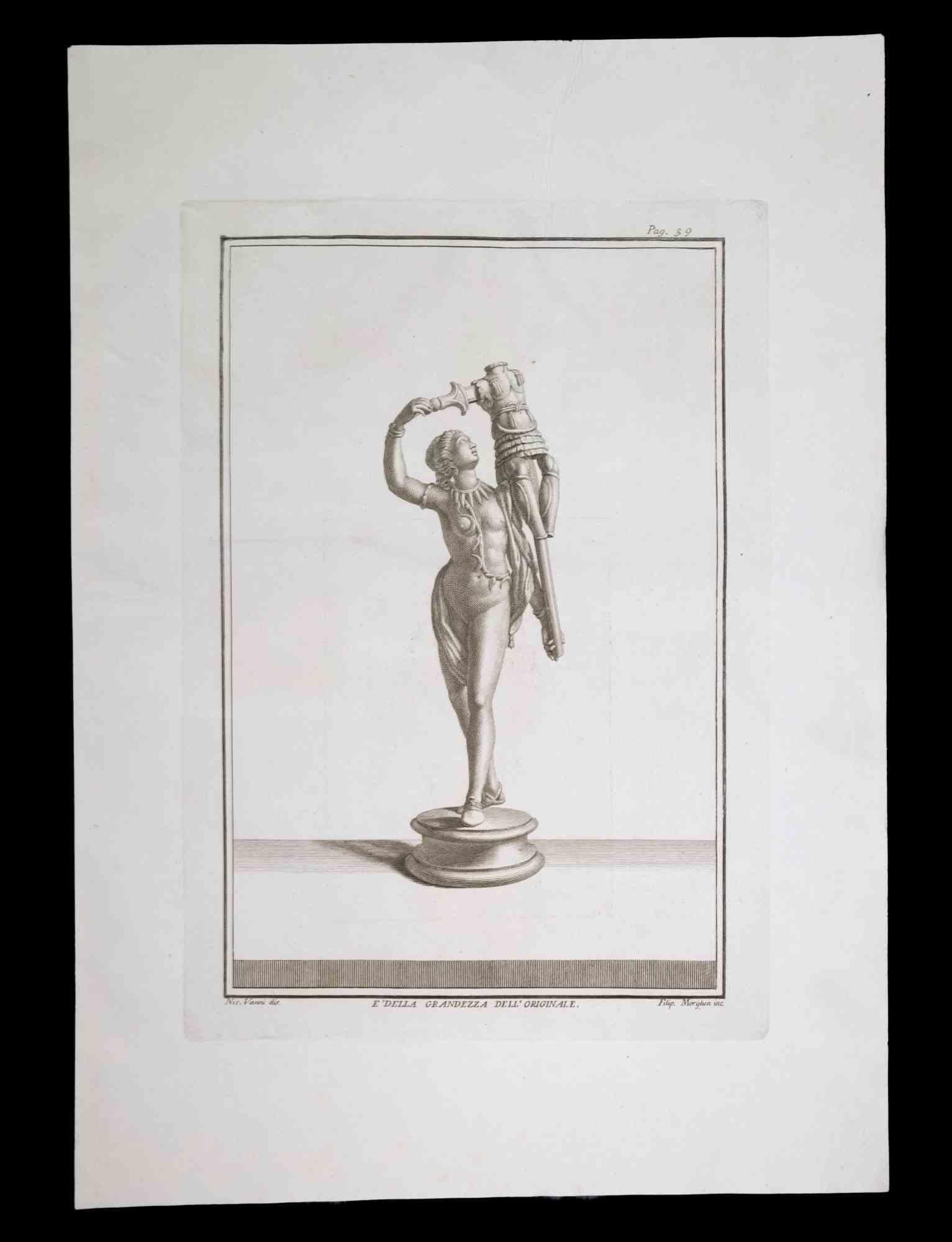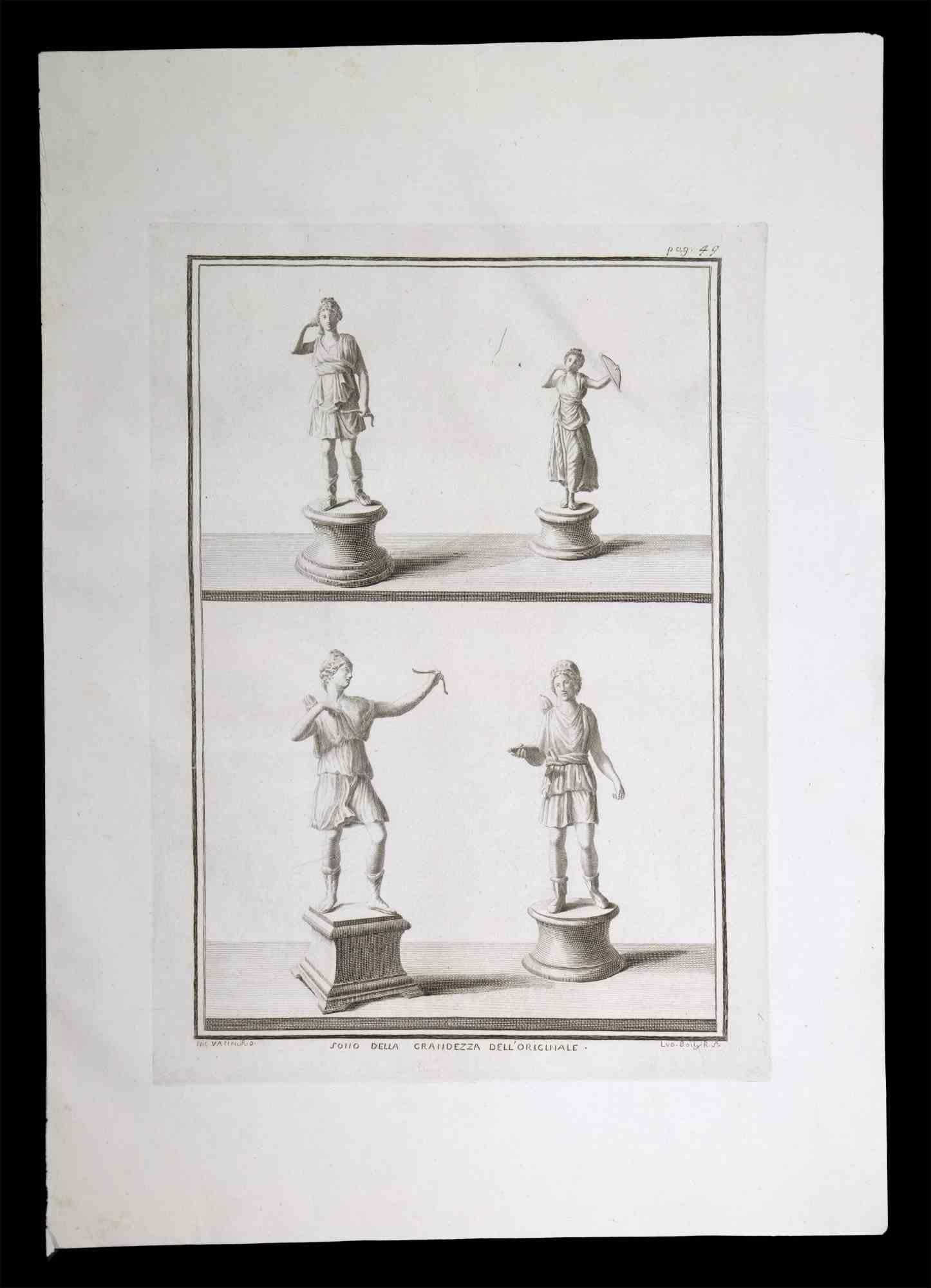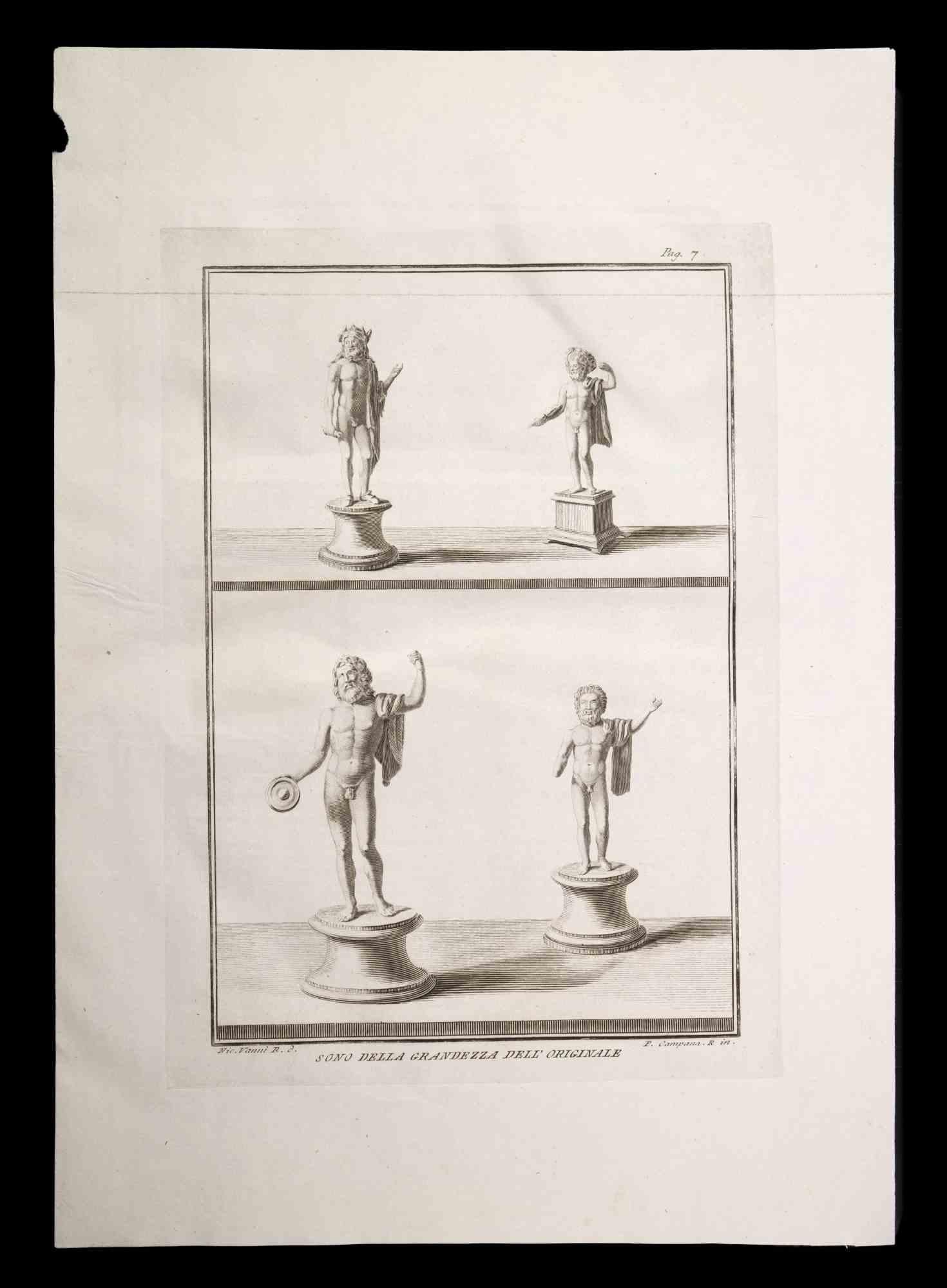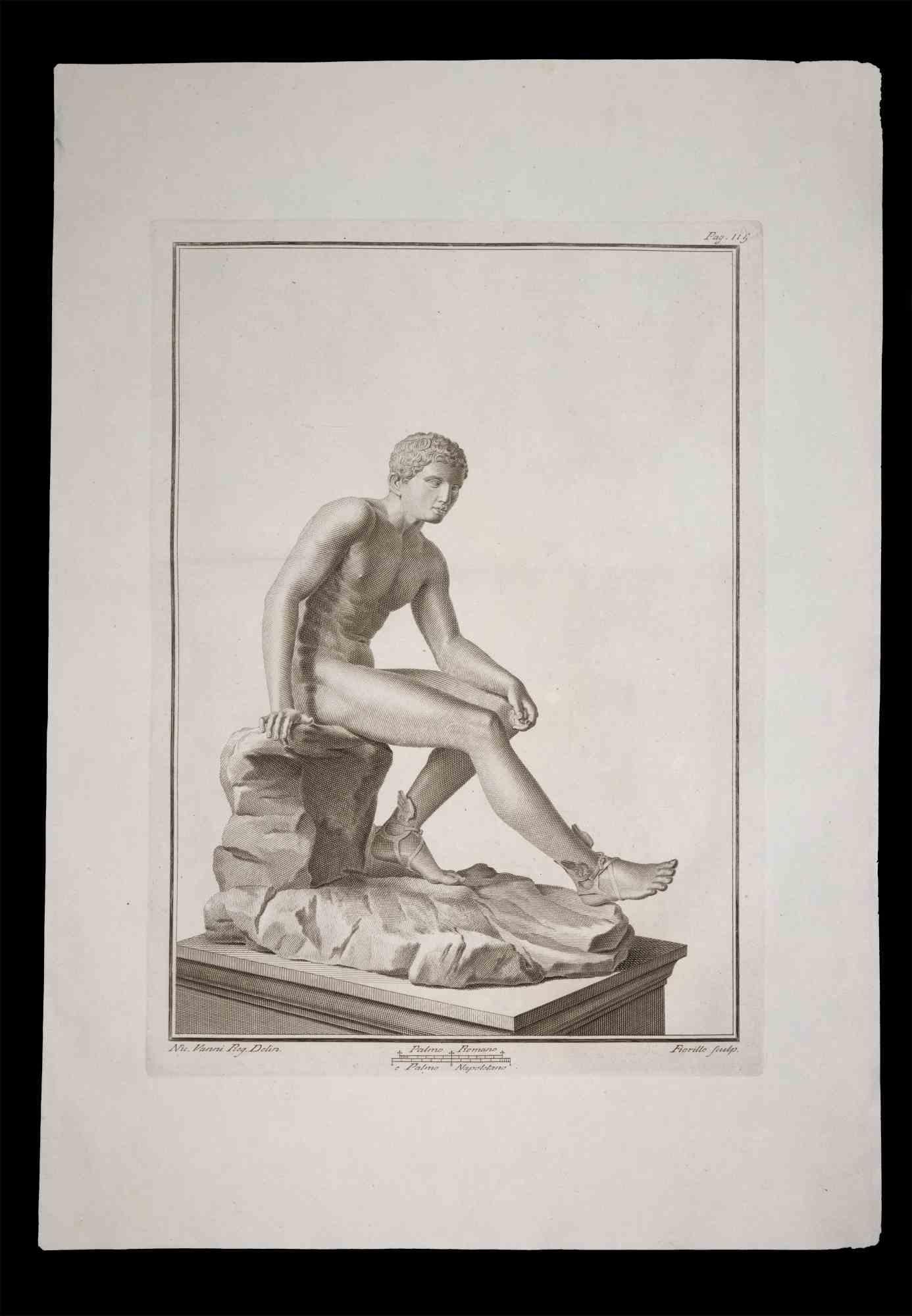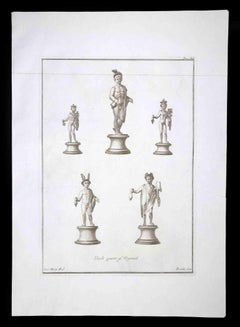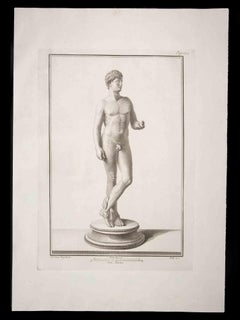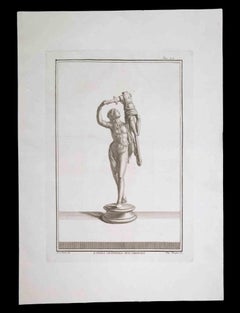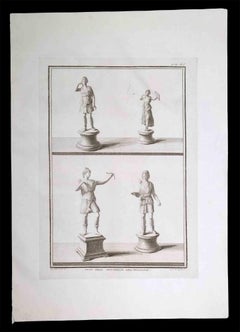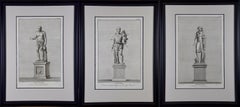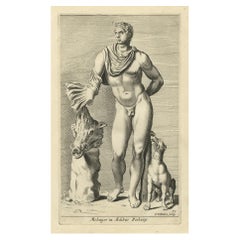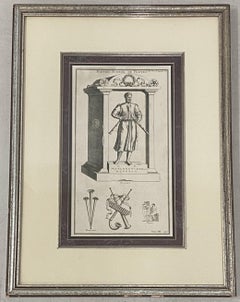Items Similar to Hermes, Ancient Roman Statue - Original Etching on Paper - 18th Century
Want more images or videos?
Request additional images or videos from the seller
1 of 5
Ludovico BoilyHermes, Ancient Roman Statue - Original Etching on Paper - 18th Century18th Century
18th Century
$565.89
£429.80
€480
CA$794.31
A$867.45
CHF 455.34
MX$10,404.30
NOK 5,734.75
SEK 5,387.14
DKK 3,655.93
About the Item
Hermes, Ancient Roman Statue, from the series "Antiquities of Herculaneum", is an original etching on paper realized by Ludovico Boily in the 18th century.
Signed on the plate, on the lower right.
Good conditions with slight folding.
The etching belongs to the print suite “Antiquities of Herculaneum Exposed” (original title: “Le Antichità di Ercolano Esposte”), an eight-volume volume of engravings of the finds from the excavation of the ruins of Herculaneum in the Kingdom of Naples (now Campania, Italy).
It was published between 1757 and 1792 by the Regia Stamperia, and copies were delivered to selected recipients across Europe.
Despite the title, the Antiquity of Herculaneum shows objects from all the excavations undertaken by the Bourbons in the Gulf of Naples. These include Pompeii, Stabia and two sites of Herculaneum: Resina and Portici.
The Bourbon King Carlo appointed fifteen scholars creating a new “Herculaneum Academy” to study the artifacts and publish the results of the archaeological excavations of the sites.
The engravings are of high quality and the accompanying text shows a large scholarship.
They were realized by 25 prominent artists involved by the King to prepare drawings and engravings on the finds, among which we can find Giovanni Elia Morghen, Carlo Nolli, Luigi Vanvitelli and Giovanni Battista Casanova.
The “Antiquities” was designed more to amaze readers with the quality of the objects in the collection of the King of Naples than to be used in research., following and increasing the interest of 18th century society for the classical culture and Art in particular.
Through the exaltation of the classical concept of proportions and harmony, the book was of inspiration to the neoclassical movement in Europe, giving artists and decorators access to a huge shop of Hellenistic motifs.
Ref.:
National Gallery (Washington), Mark J. Millard Architectural, IV (2000), no. 1;
L. Garcia y Garcia, Nova bibliotheca pompeiana (2 v., 1998);
Royal Institute of British Architects, British Architectural Library ... Early printed books, 1 (1994), no. 112.
U. Pannuti, 'Incisori e disegnatori della Stamperia Reale di Napoli nel secolo XVIII: la pubblicazione delle Antichità di Ercolano', in Xenia antiqua, 9 (2000), p. 151-178;
V. Trombetta, 'L'edizione de Le Antichità di Ercolano esposte' in Rendiconti dell'Accademia di Archeologia, lettere e belle arti di Napoli , 59 (1984), p.151-172.
- Creator:
- Creation Year:18th Century
- Dimensions:Height: 19.3 in (49 cm)Width: 13.39 in (34 cm)Depth: 0.04 in (1 mm)
- Medium:
- Movement & Style:
- Period:
- Framing:Framing Options Available
- Condition:Insurance may be requested by customers as additional service, contact us for more information.
- Gallery Location:Roma, IT
- Reference Number:Seller: T-1245941stDibs: LU65038907942
About the Seller
4.9
Platinum Seller
Premium sellers with a 4.7+ rating and 24-hour response times
1stDibs seller since 2017
7,793 sales on 1stDibs
Typical response time: 1 hour
- ShippingRetrieving quote...Shipping from: Monaco, Monaco
- Return Policy
Authenticity Guarantee
In the unlikely event there’s an issue with an item’s authenticity, contact us within 1 year for a full refund. DetailsMoney-Back Guarantee
If your item is not as described, is damaged in transit, or does not arrive, contact us within 7 days for a full refund. Details24-Hour Cancellation
You have a 24-hour grace period in which to reconsider your purchase, with no questions asked.Vetted Professional Sellers
Our world-class sellers must adhere to strict standards for service and quality, maintaining the integrity of our listings.Price-Match Guarantee
If you find that a seller listed the same item for a lower price elsewhere, we’ll match it.Trusted Global Delivery
Our best-in-class carrier network provides specialized shipping options worldwide, including custom delivery.More From This Seller
View AllHermes, Ancient Roman Statue- Original Etching by Nicola Fiorillo - 18th Century
Located in Roma, IT
Hermes, Ancient Roman Statue, from the series "Antiquities of Herculaneum", is an original etching on paper realized by Nicola Fiorillo in the 18th century.
Signed on the plate, on ...
Category
18th Century Old Masters Figurative Prints
Materials
Etching
Hermes in Ancient Roman Statue - Original Etching by Carlo Nolli - 18th Century
By Carlo Nolli
Located in Roma, IT
Hermes in Ancient Roman Statue, from the series "Antiquities of Herculaneum", is an original etching on paper realized by Carlo Nolli in the 18th century.
Signed on the plate, on th...
Category
18th Century Old Masters Figurative Prints
Materials
Etching
Ancient Roman Statue - Original Etching by Filippo Morghen - 18th century
By Filippo Morghen
Located in Roma, IT
Ancient Roman Statue, from the series "Antiquities of Herculaneum", is an original etching on paper realized by Filippo Morghen in the 18th century.
Signed on the plate, on the lowe...
Category
18th Century Contemporary Figurative Prints
Materials
Etching
Artemis, Ancient Roman Statue - Etching on Paper - 18th Century
By Ludovico Boily
Located in Roma, IT
Artemis, Ancient Roman Statue, from the series "Antiquities of Herculaneum", is an original etching on paper realized by Ludovico Boily in the 18th century.
Signed on the plate, on ...
Category
18th Century Contemporary Figurative Prints
Materials
Paper, Etching
Ancient Roman Statue - Original Etching by Pietro Campana - 18th entury
Located in Roma, IT
Ancient Roman Statue, from the series "Antiquities of Herculaneum", is an original etching on paper realized by P. Campana in the 18th Century.
Signed on the plate, on the lower rig...
Category
18th Century Modern Figurative Prints
Materials
Etching
Hermes, Ancient Roman Statue- Original Etching by Nicola Fiorillo - 18th Century
Located in Roma, IT
Hermes, Ancient Roman Statue, from the series "Antiquities of Herculaneum", is an original etching on paper realized by Nicola Fiorillo in the 18th century.
Signed on the plate, on ...
Category
18th Century Old Masters Figurative Prints
Materials
Etching
You May Also Like
Ancient Roman Statues in the Vatican: A Grouping of Three 18th C. Engravings
By Vincenzo Dolcibene
Located in Alamo, CA
This is a set of three framed 18th century engravings depicting statues found in the Vatican, including: "Pescatore" (Fisherman), "Pastore" (Shepherd) and "Istrione" (Actor), "Gia ne...
Category
1780s Old Masters Still-life Prints
Materials
Engraving
Antique Italian Copper Engraving - Roman Male Statue
Located in Houston, TX
Fine antique copper line engraving of roman style male statue seated and clutching a scroll, circa 1850.
Original artwork on paper displayed on a white ma...
Category
19th Century Still-life Prints
Materials
Ink, Paper
Antique Engraving of the Statue of the Mythologic Hero Meleager, Rome. 1660
Located in Langweer, NL
Description: Antique print, titled: 'Meleager in Aedibus Pichinys.'
Statue of Meleager in Rome. In Greek mythology, Meleager was a hero venerated in his temenos at Calydon in Aetolia. He was already famed as the host of the Calydonian boar hunt in the epic tradition that was reworked by Homer.
From the 1660 Dutch edition of 'Icones et Segmenta Nobil. Signorum et Statuarum quae Romae extant' by Francois Perrier...
Category
Antique 1660s Prints
Materials
Paper
19th Century Etching "Master of Flutes" Etching After Robert Boissard
By Robert Boissard
Located in San Francisco, CA
19th Century Etching "Master of Flutes" Etching After Robert Boissard
Framed etching with neoclassical elements
After Robert Boissard (1570-160...
Category
Mid-19th Century Figurative Prints
Materials
Etching
Old Print of Bacchus or Dionysus, God of the Wine and Religious Ecstasy, 1660
Located in Langweer, NL
Antique print, titled: 'Nyseus Bachus in Aedibus, Burghesys.'
Statue of Bacchus or Dionysus, the god of the grape harvest, winemaking and wine, of ritual madness, fertility, theatre and religious ecstasy in ancient Greek religion and myth.
From the 1660 Dutch edition of 'Icones et Segmenta Nobil. Signorum et Statuarum quae Romae extant' by Francois Perrier...
Category
Antique Early 1600s Prints
Materials
Paper
Farnese Hermes, British Museum Roman antiquity Classical sculpture photogravure
Located in Melbourne, Victoria
'Farnese Hermes'
Photogravure from a collection of photogravures depicting Greek and Roman marbles and bronzes in the British museum. Plate number above top right corner of the imag...
Category
1910s Other Art Style Portrait Prints
Materials
Photogravure
